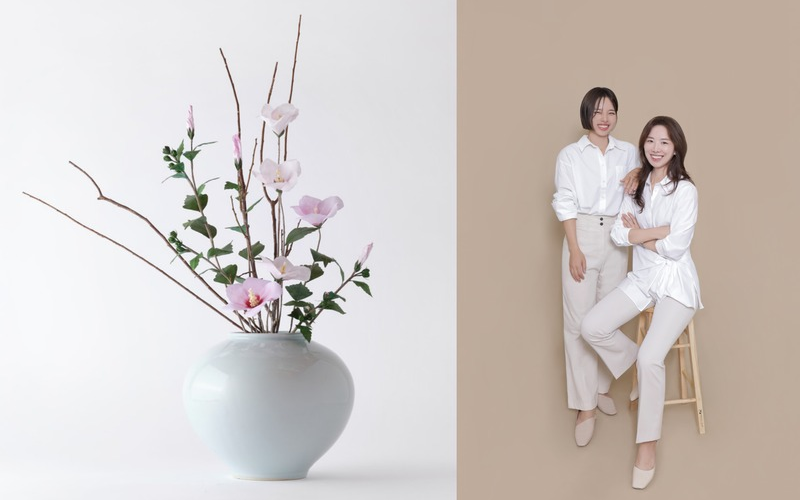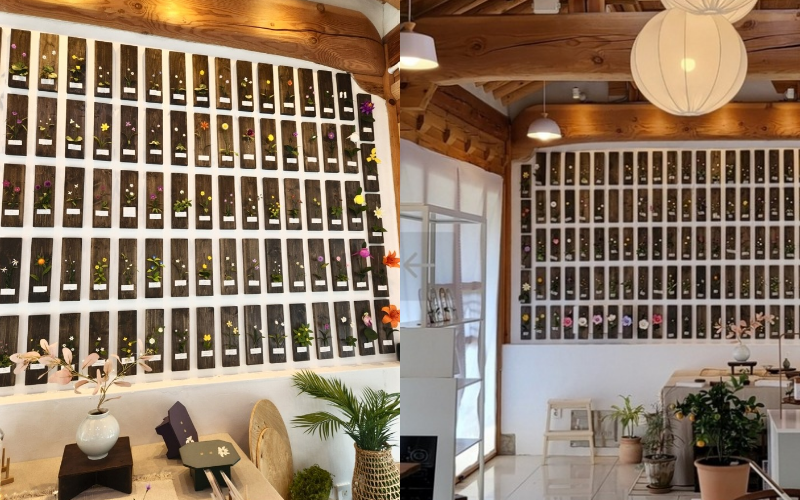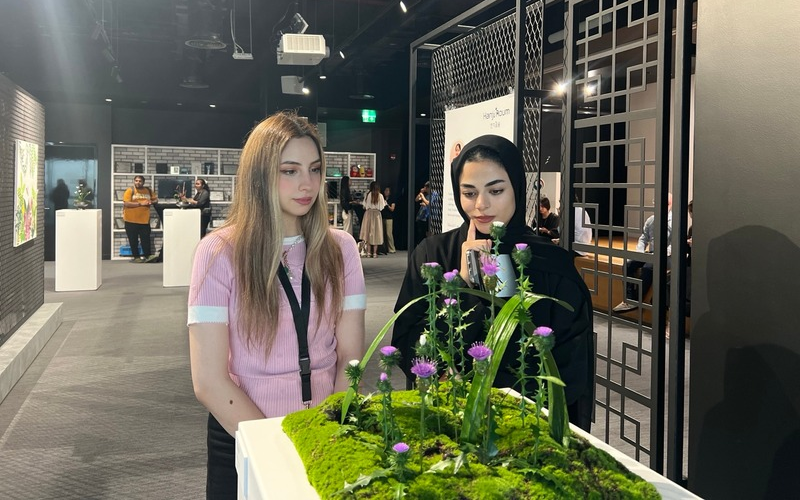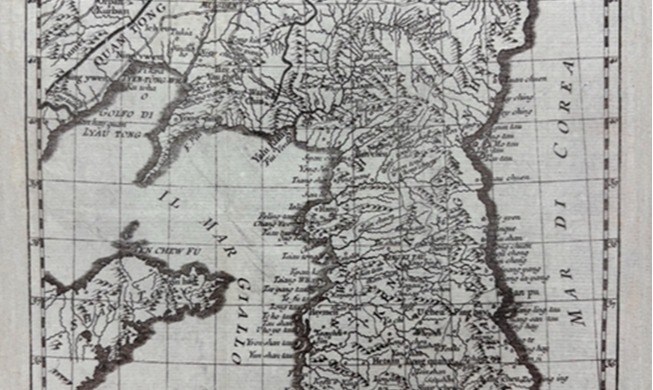- 한국어
- English
- 日本語
- 中文
- العربية
- Español
- Français
- Deutsch
- Pусский
- Tiếng Việt
- Indonesian
By Honorary Reporter Imane Bouhnika from Algeria
Photos = Hanjiroum Studio
Sisters Kwon Young-eun and Young-hyun founded Hanjiroum, a studio in Suwon, Gyeonggi-do Province, to promote their art making jihwa, or flowers made with the traditional paper Hanji. They seek to raise awareness of their country's endangered indigenous plants by making delicate paper flowers, reflecting the floral art of the Goryeo and Joseon dynasties.
The Kwons' passion for jihwa came from their mother, who learned the art from a master two decades ago. Growing up immersed in her work, the sisters sought to share their craft with a broader audience.
Hanjiroum took part in the exhibition "Garden On Paper" from July 17 to Aug. 16 at the Korean Cultural Center in the United Arab Emirates.
The following are excerpts from a Oct. 1-9 email interview with the sisters.

On the left is a mugunghwa (rose of sharon) Hanji craft work by Hanjiroum Studio founders and sisters Kwon Young-eun and Young-hyun.
What makes Hanji and jihwa captivating?
The charm of Hanji flowers lies in the soft, delicate shades that seep into the paper, creating a gentle warmth that feels like a quiet lake. We chose Hanji because it's a natural material that best expresses flowers authentically without artificial hues or textures. While not immediately striking, the flowers possess a timeless beauty that can last 1,000 years.
How does your studio help preserve endangered wildflowers?
We recreate endangered wildflowers as realistically as possible, focusing on their unique characteristics, and turn them into sample specimens that can serve as educational materials for institutions. Through these samples, we aim to raise awareness of environmental conservation.
Describe the process of creating jihwa using Hanji.
The process begins with gathering references. We observe real flowers when in season, and if not, we rely on online images or expert guidance. Next, we dye Hanji to match a flower's natural colors, often repeating the dyeing process two or three times for accuracy.
Once the paper is ready, we carefully cut the petal and leaf shapes. Depending on the flower, we might use a hot iron to round the petals or precise cutting techniques for sharper details. The flower arrangement depends on the theme or vase, and for exhibitions at cultural centers, we incorporate traditional Korean elements to reflect national heritage.

Hanjiroum's collection of samples of jihwa art featuring wildflowers
How was your experience at a Hanji art exhibition in the UAE?
Initially, we were concerned about presenting our work to a different culture, but were grateful for the enthusiastic response it received. We featured Korea's national flower mugunghwa (rose of Sharon) and the UAE's desert flower Tribulus arranged in a moon jar, which drew a lot of attention. Visitors seemed captivated by seeing Korean wildflowers through Hanji and the detailed techniques we used. The exhibition also had a program in which participants could make a Hanji mugunghwa pen.

Visitors see Hanjiroum's works at the exhibition "Garden On Paper" hosted by the Korean Cultural Center in the United Arab Emirates.
How do you incorporate modern or personal touches into your Hanji crafts?
Honestly, our jihwa craft doesn't strictly adhere to traditional techniques and tools, which are challenging to use for crafting small detailed wildflowers. So we use traditional Hanji as the lone material. We strive to capture the essence of each flower realistically, arranging them to highlight Eastern beauty and achieve a harmony between traditional aesthetics and modern spaces.
What are Hanjiroom's upcoming projects?
One is participating for the first time in the Craft Trend Fair from Dec. 12-15 at COEX Mall in Seoul. We will present our works at the craft workshop section.
Additionally, we plan to expand our reach through exhibitions, activities and product development using wildflowers as motifs, drawing inspiration from nature and everyday objects.
*This article is written by a Korea.net Honorary Reporter. Our group of Honorary Reporters are from all around the world, and they share with Korea.net their love and passion for all things Korean.
